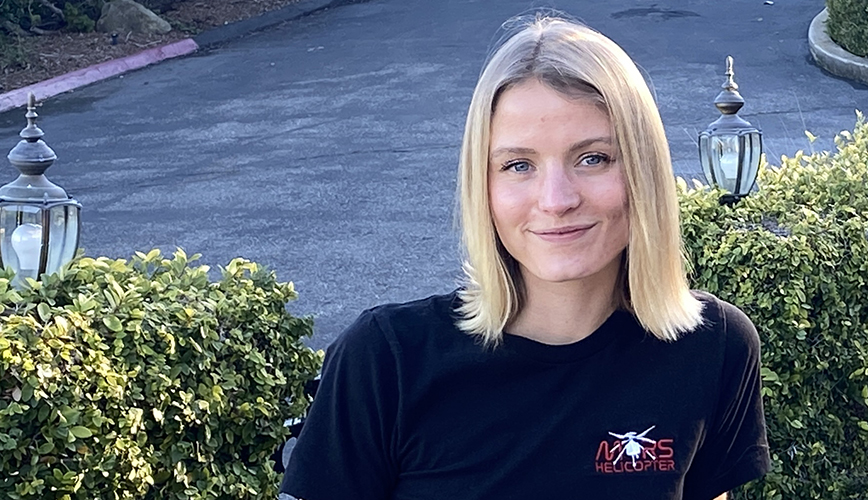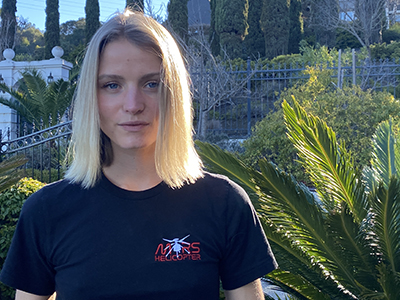Fresh out of KTH, a full time job for NASA
Engineering helicopters for the Martian surface

Three days after presenting her bachelor’s thesis in Engineering Physics at KTH, Tove Ågren went to the US. Awaiting her in California was a permanent position at NASA, where she now creates simulations for helicopters that will explore conditions on Mars.
A lot has happened since Tove Ågren moved from her hometown of Falun to Stockholm after high school in 2015. She then opted to take a year out, working in a coffee shop and as a model for the agency Mikas, before starting an Engineering Physics degree at KTH in 2017.
“While I was in high school I did a work placement at the ESA, the European Space Agency, and my dissertation placement was at the Swedish Space Corporation,” she says.
Just before the pandemic, in 2020, she got a work placement at NASA via the Swedish National Space Agency, but because of Covid-19 she had to finish her placement project from home in Sweden.
“But I never gave up the idea of working for NASA in America. I kept in close touch with my coordinator there, and it worked out.”
Ågren was advised to apply for a vacant job, and today she has a permanent position at
NASA’s Ames Research Center
.
Helicopters to collect material from Martian surface
“I model and simulate helicopters that will fly on Mars and collect material from the ground.”
The helicopters are part of a Sample Return programme, whereby samples from Mars’s surface will be brought back to Earth for analysis.
“The helicopters could also be used in building the future infrastructure on Mars. And depending on what kind of chemical and biological finds are made on the red planet, the research could increase our understanding of the universe and be of value to life here on Earth,” says Ågren.

She lives in the city of Cupertino in the Bay Area, a 15-minute drive from Mountain View and NASA’s headquarters.
“You need a car to be able to get around. The housing market here is even more extreme than it is in Stockholm, if that’s possible. I live in co-housing with 12 people, and six of us are colleagues at the NASA Ames Research Center.”
The starting salary at state-run NASA is high compared to similar jobs in Sweden, but in Silicon Valley it is considered very modest compared to some of the major private corporations, says Ågren.
“You can earn twice as much at a private technology company, but I’m perfectly happy with my pay, especially bearing in mind my degree from KTH is only a bachelor’s in Engineering Physics, with a master’s in Computational and Applied Mathematics.”
Ågren plans to continue researching and studying for a PhD in aerospace engineering, and intends to further her studies gradually alongside her career.
“I like KTH a lot. I can see myself doing my doctorate there in future, or at a university in the Netherlands, France or Switzerland. Ideally I’d like to live and work half the year in the States and spend my summers in Sweden.”
Could you imagine going into outer space yourself?
“Definitely. Space and the universe are so fascinating. A lot of us who work in this industry would love to go into space. One of my housemates is already well on the way to qualifying as an astronaut for future projects.”
What’s your vision for the future? Where will you be in ten years’ time?
“Ideally I’d like to still be working in the aerospace sector, there’ll be a lot happening here in the future. For instance, these helicopters will be used on Mars in five years’ time, so 2028 if everything goes to plan.
“It is hoped that the research findings from the project will help us find out if there has ever been life on Mars. They could even increase our understanding of climate change on Earth. New technical solutions developed as part of the project could improve life for everybody.”
Text: Katarina Ahlfort
Photo: Demi Vincefi
